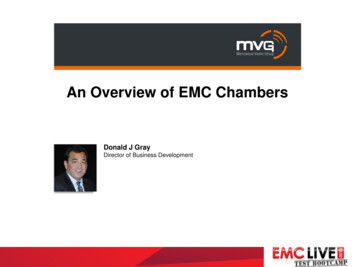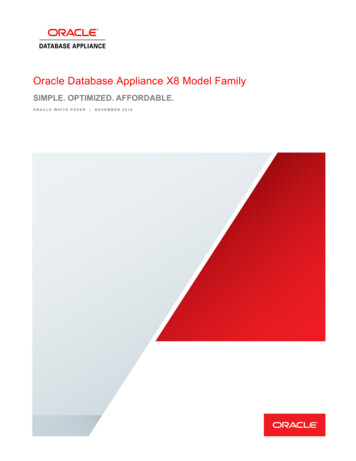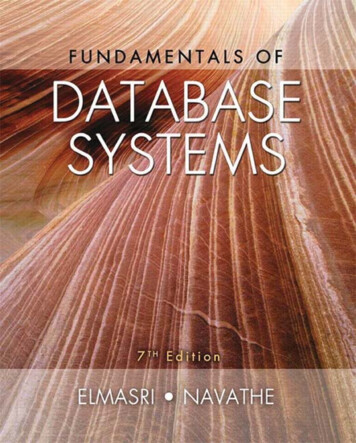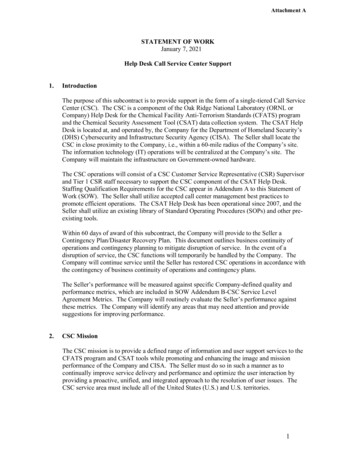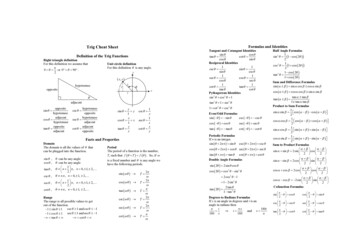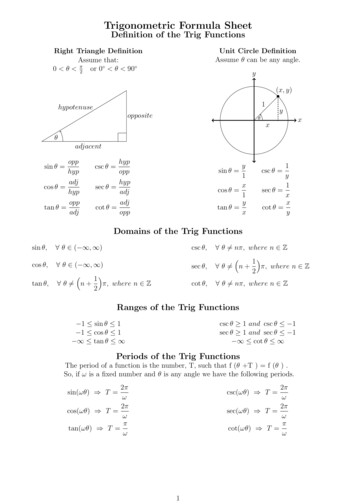
Transcription
CSC 261/461 – Database SystemsSpark!Spring 2018
SPARK
What is SPARK? Apache Spark is a cluster computing platform designed to be fastand general purpose. Spark extends the popular MapReduce model to efficiently supportmore types of computations, including interactive queries andmachine learning. Spark is also more efficient than MapReduce for complexapplications running on disk. Spark makes it easy and inexpensive to combine differentprocessing types. In addition, it reduces the management burdenof maintaining separate tools.
Why are we using Spark? Spark is designed to be highly accessible, offering simple APIs inPython, Java, Scala, and SQL, and rich built-in libraries. Spark can run in Hadoop or General Parallel File System (GPFS)clusters. Also, CIRC is giving us a great interface to access Spark.
Spark StackOne of the largest advantages of tight integration is the ability to buildapplications that seamlessly combine different processing models.For example, in Spark, you can write one application that uses machine learningto classify data in real time as it is ingested from streaming sources.Simultaneously, analysts can query the resulting data, also in real time, via SQL(e.g., to join the data with unstructured logfiles).In addition, more sophisticated data engineers and data scientists can access thesame data via the Python shell for ad hoc analysis.
Spark Core Spark Core contains the basic functionality of Spark, includingcomponents for:– task scheduling,– memory management,– fault recovery,– interacting with storage systems, Spark Core is also home to the API that defines resilient distributeddatasets (RDDs), which are Spark’s main programming abstraction.
Resilient distributed datasets (RDD) RDDs represent a collection of items distributed across manycompute nodes that can be manipulated in parallel. Spark Core provides many APIs for building and manipulating thesecollections.
Spark Library/Package Spark SQL– Spark’s package for working with structured data. It allows querying datavia SQL Spark Streaming– Spark component that enables processing of live streams of data MLlib– A library containing common machine learning (ML) functionality GraphX– A library for manipulating graphs (e.g., a social network’s friend graph)
Cluster Managers Spark is designed to efficiently scale up from one to manythousands of compute nodes. Spark can run over a variety of cluster managers, including– Hadoop YARN,– Apache Mesos,– Standalone Scheduler (A cluster manager included in Spark )
MAP-REDUCE
Acknowledgement Some of the slides in this presentation are taken from the slidesprovided by the authors. Many of these slides are taken from cs145 course offered byStanford University. ide-to-acidand-database-transactions/ Spark slides and material: Jonathan Carroll-Nellenback (CIRC, UofR)
Python Lambda Functions Python supports the creation of anonymous functions (i.e.functions that are not bound to a name) at runtime, using aconstruct called "lambda". This is not exactly the same as lambda in functional programminglanguages, It is a very powerful concept that's often used in conjunction withtypical functional concepts like filter(), map() and reduce().
filter(function, iterable) Construct a list from those elements of iterable forwhich function returns true. filter(function, iterable) is equivalent to [item for item in iterable if function(item)]
map(function, iterable, .) Apply function to every item of iterable and return a list of theresults
reduce(function, iterable[, initializer]) Apply function of two arguments cumulatively to the itemsof iterable, from left to right, so as to reduce the iterable to asingle value. For example, reduce(lambda x, y: x y, [1, 2, 3, 4, 5]) calculates ((((1 2) 3) 4) 5). Note: Different from reduceByKey()
Example
JUPYTER NOTEBOOK
Website Jupyter notebook: jupyter.circ.rochester.edu/ Log in (NETID credentials)– Needs Duo credentials 8 CPU 16GB Memory should be good enough. Select New - Python 2 (Spark) Kernel You are all set to go. (also, you may would like to download lecture24.ipynb andtaleOfTwoCities.txt from the course website.)
Acknowledgement Spark slides and material: Jonathan Carroll-Nellenback (CIRC, UofR) Learning Spark Lightning-Fast Big Data Analysis– By Holden Karau, Andy Konwinski, Patrick Wendell, Matei Zaharia– Publisher: O'Reilly Media
Spark slides and material: Jonathan Carroll-Nellenback(CIRC, UofR) Learning Spark Lightning-Fast Big Data Analysis –ByHolden Karau, Andy Konwinski, Patrick Wendell,



